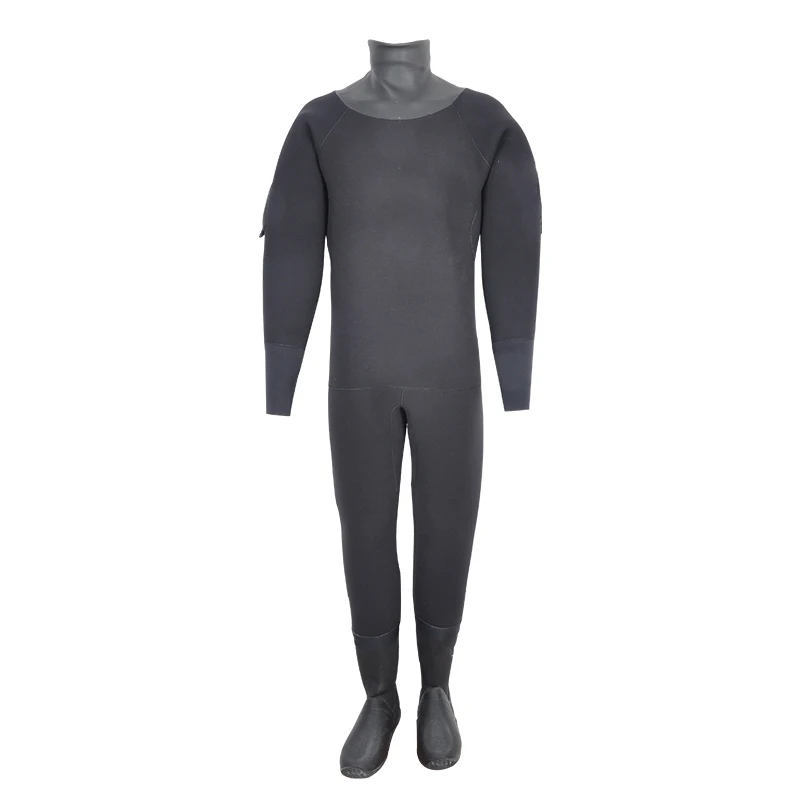Paddling drysuits are meant to be more breathable but water resistant for quick immersion at/near the surface. They are not intended for diving at depth. Swimming a few feet deep, for example, is just a tad over 1 ata. Go to 10m/33ft and you are at 2 ata, and so on and so forth. Then you have the issue of trying to install inflator and exhaust valves without them leaking. In the end you will likely end up with a worthless drysuit, especially if you get it from Aliexpress.
Drysuits are definitely not cheap, so I understand your desire to try to find a workable solution for less. But you get what you pay for. A Sealskin Nova, for example, goes for about $1000 and will be a much better drysuit than some Frankenstein'ed Aliexpress paddling suit.
My main issue is body health. I put on a TON of weight over the last 18 months. I may stay this way; maybe I will lose it again. I am not investing in 'fat' clothes, either. But I don't want to get in our local water without a barrier; it's pea green and some days it stinks. I had considered it as low-impact exercise on my knees.
And, I don't forsee me doing anything too deep, so I thought the FrankenSuit or spending a hundred dollars on tape and glue to bodge up a used suit might be a good hedge until I am knowledgeable enough to know what I want in my (more) forever suit.
Quick question, when you say "osmotic pressure" do you mean water pressure? (Osmotic pressure has a specific meaning that is not what I think you intend. If you did then I suppose it would somehow depend on salinity of the water you're in compared to some thing on the other side of some membrane that is semipermeable and allows water through. Given I just confused myself with that last sentence, I'm really hoping you meant water pressure or ambient pressure.)
It's not too tough to add valves. I've toyed with the idea of putting a dump valve at the wrist of my suit. Dove an Apollo for years that had this, and loved it.
I was considering that my understanding of tri and quad laminate suits one of the layers is a semipermeable membrane that allows 'sweat' out but prevents water intrusion to varying degrees.
My experience with that is surface weather wear, repairing leaking seams and holes, and to a lesser extent water filtration. (... and kidneys)
I thought, perhaps in a cost saving measure there were different membranes with differing ability to resist intrusion at pressures. Perhaps they are lighter and more flexible, while ones that survive at multiple atmospheres are thicker, heavier and inflexible. (Again, I don't know what I don't know).
Perhaps it is more correct to simply say water pressure resistance, but I felt like the membrane was osmotically allowing vapor to go one way and resist liquid from the other, and so, described my notion.
You considering a wrist dump gives me a little hope. (I thought about one at the ankles, honestly). My impression of most divers are that they don't really enjoy custom or modified gear, and so they never really considered what was different in a high end surface suit versus a low-tier diving suit and simply ponied up 3 grand... buy once cry once?
I thought, punch a hole, then glue the layers, then apply tape or rubber to dress the edge of the circle.






